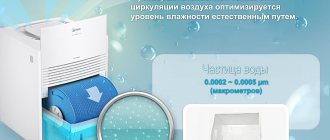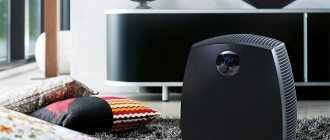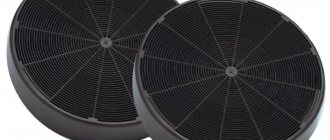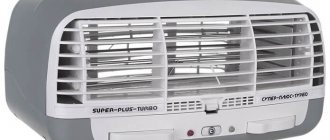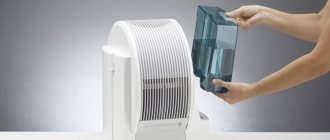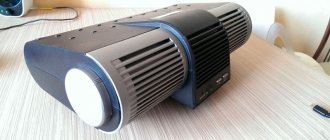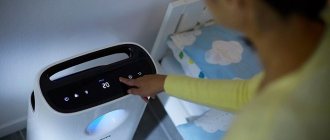What we breathe in the house affects our health and mood, which is why air purifiers are becoming so popular. Xiaomi has a whole line of these devices (Mi Air Purifier), which are suitable for almost any room and request. We have compared the parameters of Xiaomi air purifiers so that you can choose the best option for yourself.
Checklist: main points when choosing an air purifier
- How big is your living or work space? The larger the area, the wider the coverage area the air purifier should have.
- How strongly do you react to allergens and pollutants in the air? The higher your sensitivity to small particles that are in the air but usually invisible to the naked eye (dust, pollen, industrial emissions, etc.), the higher the clean air supply level should be (in cubic meters per hour).
- Do you need temperature, humidity and PM2.5 readings?
All models of Xiaomi Mi Air Purifier purifiers, except 2 and 2H, are equipped with a laser sensor and provide information on PM2.5 levels, as well as humidity and room temperature. *PM2.5 is particulate matter less than 2.5 micrometers in diameter. They are dangerous if exposed to them for a long period of time.
Application
In order to connect to Mi Air you need to download the MiHome application (Android or iOS). After downloading the application, you need to connect to the WiFi provided by Xiaomi Mi Air Purifier 2 and add a new device to MiHome, following the steps suggested by the application. As a result, a new application will appear on your device, which will be called the same as you called your Mi Air - for me it’s Dronk Air
Once we enter this application, we will see the main interface and the conditional number of the air condition.
In addition to controlling basic functions (turning on/off/switching modes), in the application you can see the air temperature in the room, humidity, condition assessment (it can be from humid to excellent), your location (if allowed) and how many days the filter has left to work.
Among the useful additional functions: 1. Child protection (that is, all the buttons on the filter itself will stop working if activated) 2. There are detailed instructions with pictures in the section about the device 3. Updating the purifier firmware using one button (in 2-3 minutes updated, taking into account the reboot of the device) 4. Automatic on and off timer (you can only blow air when someone is at home) 5. Turn off all sound signals, if annoying 6. Turn off light indications, so as not to interfere
And a few more little things. The application is updated frequently and something new appears periodically.
Comparison of Xiaomi Mi Air Purifier models
From left to right - 2, 2s, Pro and MAX. Photo: cavarii.com
The main differences between the models in the line are their size, clean air supply and coverage area.
The largest and most effective is Xiaomi Air Purifier MAX. It purifies the air in rooms up to 84 square meters. m with the maximum level of clean air supply in the line of 700 cubic meters. m/h. This cleaner is suitable for large apartments and offices that require the fastest possible cleaning.
The size of the device, the coverage area and the level of clean air supply are gradually reduced from model to model. For many, Xiaomi Air Purifier Pro is suitable, which can distribute clean air at a speed of up to 500 cubic meters. m/h. within 60 sq. M. And the most compact model - Xiaomi Mi Air Purifier 2 - is ideal for a bedroom or small room. However, if you are particularly sensitive to allergens and pollutants, then the Xiaomi Air Purifier 3/3H will be preferable to the 2/2H/2S for a small space.
Filters in Xiaomi air purifiers
Xiaomi Mi Air Purifier air purifiers, designed for the European market and Russia, contain HEPA (High Efficiency Particulate Arrestance) filters, which are extremely effective against PM2.5 particles. These are triple activated coconut carbon filters. They are designed to purify the air 360 degrees, removing 99% of all microparticles and pollutants, including smoke, household dust, pet dander, mold spores, pollen, formaldehyde and other harmful compounds. The Xiaomi Mi Air Purifier 3H air purifier is equipped with a HEPA 13 class filter, the filtration efficiency of which is increased to 99.95%.
HEPA filter with dust and particles settled on it. Photo: dennis-knake.de
Mi Air Purifier versions for the Asian market use a basic filter class E11 (H11). Its cleaning efficiency is slightly weaker - it is estimated at 95% or higher. At the same time, you can independently replace the original cartridge with a HEPA filter, so the difference between the “European” and “Asian” Mi Air Purifier cannot be called fundamental.
To understand which version of the cleaner is in front of you, you need to pay attention to the name. Models for the European market and Russia have an H in the name, and purifiers without a letter in it are devices for the Asian market, which are equipped with a Chinese plug.
How Xiaomi air purifiers work
All Mi Air Purifiers are equipped with an efficient dual fan system that can distribute clean air to the farthest corners of the space. And the built-in high-precision laser sensor accurately measures temperature, humidity and PM2.5 levels in the room, instantly responding to changes in these indicators (as mentioned above, all models except Xiaomi Mi Air Purifier 2/2H are equipped with such a sensor).
Xiaomi air purifiers operate in several modes: automatic, night and manual. In automatic mode, the purifier turns on if the sensor detects air pollution above the permissible limit. In manual mode, you activate the cleaning yourself and also select its power. Night mode is quiet and energy efficient, but the trade-off is lower performance.
You can control the purifier not only manually (there is a mode switch button on the body), but also through the Mi Home application: the built-in Wi-Fi module allows you to control the air quality at home, no matter where you are. By connecting your device to the application, you can also control it through voice assistants - Alexa, Google Assistant or Alice.
The application interface (2 screens) shows the level of PM2.5 particles, temperature, humidity and important information about the operation of Mi Air Purifier 2S. Source: fonearena.com
Air purifier Xiaomi Mi Air Purifier 2 (after 4 months of use)
Hi all! A few months ago I bought an air purifier, because there is active construction under the window and a layer of dust constantly appears on all horizontal surfaces of the house (often black and gray, apparently concrete or building mixtures fly apart...). Plus, neighbors sometimes smoke and the smell of smoke enters the house through the windows. I read reviews on the Internet and decided to choose Xiaomi Mi Air Purifier 2. It’s not difficult to find a replacement filter for it, and in my opinion the design looks good. I ordered it on GearBest, but then I looked it up and it wasn’t necessary to order from China; I could have found it for about the same price in Russian online stores. The parcel arrived by courier in about two weeks.
Since the purchase was made 4 months ago and at that time I did not intend to write a review, I did not save photos of the packaging.
Characteristics:
Air purification capacity (CADR)…………….310 cubic m/h Air purity control… yes Filters… pre-cleaning, HEPA filter HEPA filter class… H11
Instructions (in Chinese)
Appearance
The purifier is not small, it has dimensions: 520x240x240mm (HxWxD). On the front panel there are indicators for the operation of the device, and many holes for air intake (they are located around the entire perimeter of the device).
At the back there is a hatch for replacing the filter element, a dust sensor window and a button to reset the filter life counter/change the brightness of the indicators.
At the top there are clean air outlets, behind which there is a dual fan and a button to turn on/change the operating mode.
There is nothing interesting on the bottom, except for a sticker with characteristics and rubber “feet” so that the device does not scratch the furniture.
The power connector is a regular “laptop” one, located at the bottom of the device:
The wire came with a Chinese plug and was immediately adapted using a plug from the nearest hardware store:
Control
The device is controlled using a button on the top edge:
A long press turns the device on/off, a short press cyclically switches the operating mode. Next to the button there is also a Wi-Fi indicator (blinks when there is no connection and lights up when connected to the network).
Three LEDs at the top of the device are responsible for indicating the operating mode:
There are three operating modes: automatic (auto), night (sleep) and “favorites”. In automatic mode, the purifier itself regulates the fan speed depending on the cleanliness of the air, in night mode it is always at minimum speed, and in the “favorite” mode the fan speed can be set independently from the application.
There is a button on the back with which you can adjust the brightness of the purifier indicators:
There are three brightness modes: bright, dim and off (in this mode, when you press the button, the device lights up the LEDs in dim mode for a few seconds). I photographed the bright and dim modes with the same camera settings (I tried to make it noticeable):
Although to the eye the difference seems more significant. By the way, the indicator at the bottom of the device shows the air quality, it lights up green if the air is clean, orange if there is slight pollution and red if everything is really bad... Unfortunately (or maybe fortunately), I was not able to see the orange or red glow of the indicator, not looking at the construction site next door.
Application
As with other Xiaomi products, most of the functionality is only available through the MiHome application. When you first turned on and launched MiHome, the device was found and installed by itself, this is how it looks on the main screen:
The widget provides information on the number of PM2.5 particles, as well as temperature and humidity in the room, filter life and the amount of purified air:
At the bottom there are on/off and operating mode selection buttons. By pressing and holding the “favorites” button, you can set the fan speed in the “favorites” mode:
Productivity varies accordingly from 1-4 m2 to 42-45 m2.
Also, in the settings you can schedule the device to turn on/off, set up automation, parental controls and much more:
Service
The manufacturer recommends changing the filter every 180 days; for this there is a special hatch in the back of the device:
There are replacement instructions on the hatch cover (in Chinese).
Removed filter:
The filter has collected dust, but not as much as we would like to expect after 4 months of operation.
In addition, it is sometimes recommended to clean the dust sensor with a cotton swab:
Photos in the interior:
Despite its small size, the purifier fits well on the coffee table near the sofa.
Impressions of use
The main criteria when purchasing a purifier were its laconic design and the availability of replaceable filters; in principle, this purifier fully satisfies them. However, I expected more from him. The first month I used it in automatic mode, it did not create any noise, but there was no noticeable effect either. Now the purifier operates in the “selected” mode (9-12 m2), while the noise level remains at an acceptable level, but it blows much stronger than in auto mode. At night, the switch to quiet mode (from 0:00 to 7:00) and back is programmed. To my regret, the dust did not decrease significantly. Perhaps this is due to incorrect placement. Or you need to increase the fan speed (but then it starts to make a lot of noise)… But the purifier removes unpleasant odors perfectly (and attracts the attention of visiting guests). 
Bottom line: the cleaner removes all odors very well, but I did not notice a significant reduction in dust. I think that this may be due to the fact that it needs to be placed on the floor, but I have it on the coffee table by the window (for now there is simply no way to put it on the floor, space will appear, I will definitely put it and write down my feelings).
Thank you all for your attention!
Summary
You should choose an air purifier based on the size of the room, your personal sensitivity to allergens and pollutants, and how important monitoring of parameters such as humidity, temperature and PM2.5 levels is to you.
- For large apartments and offices, it is better to choose Pro or even MAX models. For smaller rooms, depending on their area, use Air Purifier 3 or 2.
- If you are particularly sensitive to pollution and allergens, it is better to purchase a model with a higher level of clean air supply (for example, take, all other things being equal, Air Purifier 3 instead of Air Purifier 2).
- If you want to monitor the level of pollution and other indicators in real time, then any model from the line will suit you, except the Air Purifier 2/2H.
Xiaomi Smartmi Humidifier 2 - a new smart humidifier
Today we are reviewing a new air humidifier from Xiaomi’s partner, Smartmi, designed to work in the Mijia smart home ecosystem. The humidifier is interesting primarily because of its unusual operating principle - it is not ultrasonic, like most devices of this class and the first version of a smart humidifier, but mechanical, here there is a process of natural evaporation of moisture from a large area of the plates - which does not create a white coating on furniture, and does not affect air purifier sensor.
Where can I buy?
Gearbest Banggood Aliexpress JD.ru
Supply
The humidifier is delivered in a regular cardboard box; there are no identifying marks, except for the outline image of the humidifier on one side.
Everything is packed well, the foam inserts protect well from shocks and the device arrived completely intact and intact.
Inside, the package contains a humidifier, it is rectangular in shape, size - 24 * 24 * 36.5 cm, weight about 5 kg
What is in the box
The device consists of two parts, all parts, including internal ones, are covered with shockproof film, which must be removed.
The humidifier is made of white plastic with a matte surface, everything is very high quality. The only inscription on the front is the name of the manufacturer Smartmi
Device
Unlike ultrasonic humidifiers, where the lower part is the active element and the upper part is the water tank, here everything is the other way around.
The lower part is a water tank with a capacity of 4 liters, which is equipped with a liquid level sensor. Inside it there is a rotating shaft on which a large number of evaporation disks are mounted.
The shaft with discs can be easily removed; along its edges there are removable covers in the form of gears, through which rotation is transmitted from the engine in the upper part of the housing.
The covers are unscrewed, for which they are marked with appropriate markings indicating the direction of rotation.
After removing the cover, you can remove all the evaporation disks one by one in order to wash them.
The surface of the disk is studded with many special elements to increase its area for better evaporation.
The cross-section of the shaft is hexagonal, thanks to which all the disks rotate without twisting.
The water tank, due to its shape and the absence of electronic components, is also easy to clean. The inner surface of the tank has an antibacterial coating that prevents the development of harmful microorganisms.
Unlike ultrasonic humidifiers, leakage is absolutely impossible in this one. The water level sensor turns off the humidifier when it runs out.
All electronics and controls are located on the top of the humidifier, almost the entire surface of which is occupied by a grille through which humidified air is supplied from the humidifier.
The air enters through another grille, which is located at the top of the back of the case.
There, on the left side, there are temperature and humidity sensors.
The humidifier is equipped with a motor that rotates the air intake fan - it is black, and through a gear transmission, transmits torque to the evaporation disks.
Operating principle
consists in the fact that air is drawn into the humidifier through the upper air intake, and then exits through the evaporation plates through the upper grille. Evaporation can reach 240 ml per hour, and the room area can be up to 36 square meters. m.
Adding water is very easy, simply through the top grill of the humidifier, and there is no need to remove the top part of the humidifier or even turn it off.
By the way, the included cable is equipped with a flat American plug, so if you have not yet acquired universal sockets, you will have to look for an adapter.
Control
Manual control of the humidifier is carried out using two buttons on the top. The left button switches the brightness of the LEDs - bright, medium and off. There are 10 LEDs, 5 are the water level, then the wi-fi indicator and operating modes, automatic and three speeds. Right button - switches operating modes in a circle, between three manual and automatic.
Application
The gadget works in the Xiaomi Mijia smart home ecosystem and is controlled by the MiHome application. After connecting it to the network, we launch the Add Device Wizard, which has now taken the form of a radar, detect it, select the main Wi-Fi network and wait for synchronization.
After a couple of minutes, the device is connected to the system, after which all that remains is to select its location.
The default plugin is mostly in English, but there are a number of inscriptions in Chinese. Therefore, I replaced the plugin with a localized one, from 4pda - assembly from Opel.
The main window of the plugin, in the center, in the largest font, shows the current humidity. At the top are the temperature and comfort level. Under humidity is the remaining water. At the bottom of the button are on/off, operating mode and timer. The panel at the bottom slides out, on it you can turn off the sounds of the device, set the brightness of the diodes, turn on the drying mode - it is not yet entirely clear what this is, parental control - disables control from the buttons, and the alert mode for poor performance.
The menu gives access to device management. In the main list, in addition to the standard options such as renaming the device, updating the firmware, adding to the desktop, deleting and location, there are several more interesting options.
The presence of Bluetooth turns the humidifier into a gateway for devices with this interface. Recently, it has become possible to change the time zone for devices - for the timer to work correctly, and when installing MiHome from vevs, there is a device token in the network information menu.
In scenarios, the device can only work as an action, although they could make hygrometer and thermometer readings for the conditions. There are seven actions, on, off, switching, and four operating modes, auto and three speeds.
The humidifier operates quietly, in 12 hours - approximately 35% of the tank capacity is consumed. Energy consumption is from 2 to 4 Watts, while the air purifier, which does not tolerate the steam of an ultrasonic humidifier, does not respond to this one at all.
Alternative control systems
Thanks to the token, the device can be used in alternative systems, such as domoticz. The principle is the translation of commands using the miio protocol, which I talked about earlier, and the php-miio-master package. I was able to turn the device on and off, switch operating modes - examples of commands on the slide.
On this slide there is a command to obtain the device status - the names of the first, second and third speeds. They can be substituted instead of auto - in the command on the previous slide to enable the desired speed.
All these commands are relevant for the air purifier, with the exception of the names of the modes, which can be obtained in the same way.
Video version of the review
Conclusion
This is a very economical, quiet air humidifier that does not leave white marks on furniture and does not conflict with the air purifier. Excellent controllability through alternative control systems.
If possible, I plan to replace all my ultrasonic humidifiers with this model, expensive, but worth it.
That's all, thanks for your attention.
Read other news
February 26, 2021
Mi Account: how to create and manage it
It’s convenient when everything is in one place and at hand! An account in the Xiaomi system is needed not only by owners of smartphones from this company. It is used as a service for synchronizing household appliances, smart home system devices, watches with smartphones. In short, Mi Account is the basis of the Xiaomi ecosystem. Let's understand how to register and manage this account.
February 19, 2021
Xiaomi Service Framework - what is this application and how to disable it
Is your brand new Xiaomi quickly discharged for no apparent reason? This is because some applications can run in the background, consuming not only energy, but also traffic. One such program is Xiaomi Service Framework. You may have seen this app on your phone, but you've definitely never downloaded it yourself. Why it is even needed and whether it can be removed without consequences for the smartphone, Xiaomi keeps it almost a secret from users. But we'll figure it out now.
February 16, 2021

